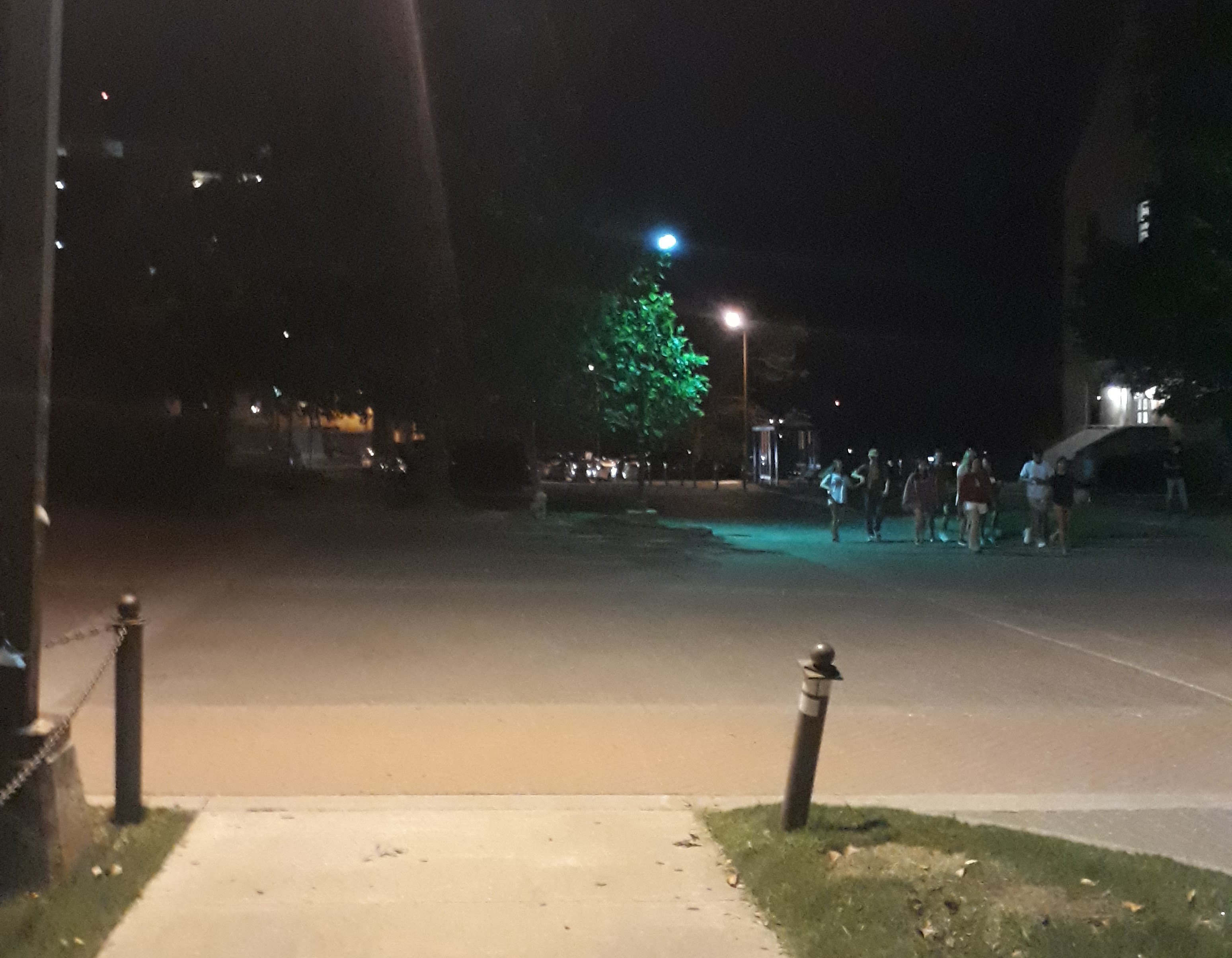By Pearce Hungate
FAYETTEVILLE, Ark. —The University of Arkansas does a lot to keep its students safe, such as making state of the art technologies available to students to protect themselves, employing a large campus police department, and having all the policies and procedures to keep crime to a minimum. However, there’s still a lot that students can do on their own to make sure they get home safely.
For students who need an emergency ride home, Safe Ride is their best bet. The Safe Ride program is designed to offer safe transportation for students who find themselves in an unsafe situation, no questions asked. The Safe Ride program considers itself a “Plan B” for when other options fail or are no longer viable. All a student needs to do is call 479-575-SAFE, and a Safe Ride vehicle will arrive and take the caller to their residence as listed on UAConnect.
If one ever has an emergency on campus and needs a prompt response, they should look for any one of the 125 emergency phones on campus. Each one connects directly to the University of Arkansas Police Department, allowing students to get the help they need. Each “e-phone” is listed on the official UARK campus map and is denoted by a blue light after dark. Is something not right? Look for the blue light.
RAVEGuardian is another good option for students who feel unsafe at night. RAVEGuardian is a free cellphone app that allows students to have a “panic button” to send a quick emergency message to UAPD along with the users GPS location. Even further, it offers a safety timer that sends a message to select friends or family members if the timer isn’t deactivated on arrival.
To receive PUSH notifications, make sure to sign up for RAZAlert in UAConnect. RAZAlert sends out messages for all kinds of campus emergencies, from adverse weather conditions, school closings, crimes on campus, and more.
Captain Gary Crain from UAPD offers other tips for students who want to stay safe.
“We encourage people to walk in pairs and groups, and to avoid walking alone. Stay alert, and if you feel unsafe, move to a public place with other people or into a building. Plan ahead when you go out and make sure you know how you’re getting home.”
The majority of focus on campus crime is generally relegated to violent crime, however, there’s another danger that students must watch out for: bad drivers. With as many crosswalks, bike lanes, and pedestrian traffic as the University enjoys, there is always bound to be a clash between those in vehicles and those on foot. But, just as with violent crime, there’s plenty that students can do to avoid becoming another victim.
Pedestrians have priority, and motorists are required to stop for anyone crossing the street. However, a distracted driver may not see someone crossing or may not even be looking in the first place. Therefore, always make sure to look both ways and ensure that the road is clear or that cars are slowing down before trying to cross.
Captain Crain also had advice to impart to motorists for how they could keep safe too.
“When driving, pay very good attention for people crossing the road. Keep your doors locked when you’re driving around, and don’t pick up strangers.”
However, some feel that the U of A could do more to keep its students safe. One of the greatest grievances is campus lighting. Some say that that there just isn’t enough for students to see all the possible dangers as they walk to their dorm, night classes, or car.
“I think there are certainly ‘dark spots’ on campus that can feel eerie at night, unfortunately it seems that some resources are being used to leave lights on in … buildings such as Champion’s, providing minimal street illumination,” said one student.
Her sentiment is a popular one. According to a poll conducted by UATV news, 89% of those surveyed felt that there weren’t enough streetlights on campus. While a lack of proper street lighting may seem like a minor issue, it can make a big difference for those out alone after sundown.
The U of A is generally regarded as a pretty safe campus, but it always helps to plan ahead and follow these tips to make the college experience as safe as possible.


